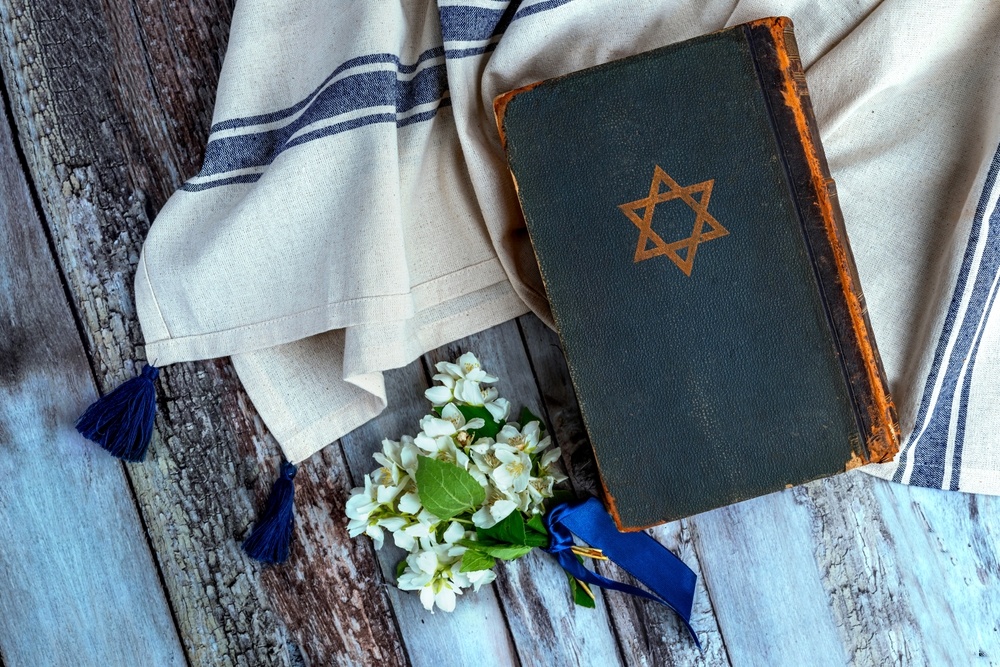
The assimilation and subsequent loss of Jews has been a problem since the beginning of Jewish history. Many of us were taught--in kindergarten, no less--how Abraham and Sarah converted many to Judaism. This is the midrashic explanation of the verse we will read next week, “and the nefesh, souls they made in Charan” (the simple explanation is that nefesh refers to the wealth they had acquired). Yet these anonymous people or their children must have assimilated, as we never hear from them again. They surely are not part of the Jewish nation who left Egypt. And at least 80% of those Jews who were in Egypt remained there at the time of the Exodus, forever lost to Jewish History.
In 721 BCE ten tribes, representing the majority of the Jewish people, were exiled and lost to the Jewish people[1]. Add in forced conversions and assimilation over the years, and it's no wonder that millions, perhaps hundreds of millions of “non-Jews” alive today are descended from Jews. Many of these, even if we have no way of identifying them, are--at least, from a halachic point of view--Jewish. While this might give us a certain sense of pride, it can create halachic issues better avoided. How, for example, does one relate to a person when we find out her maternal great-great-grandmother was Jewish, something increasingly common with modern genealogical tools? This, too, is not a new phenomenon.
“Rav Yehuda said in the name of Rav Yossi: a heathen who marries [a Jewish women] nowadays, we [must be] afraid that they are [halachically] married; perhaps he is from the lost ten tribes” (Yevamot 16b). This is a rather startling view. Rav Yossi lived close to 1,000 years after the ten tribes were lost and yet--in his words, “nowadays”--we must still be concerned that your average idolater might actually be Jewish. Must we suspect that every Spaniard might be Jewish?[2] Even if many, many ‘non-Jews’ are in fact Jewish, the Gemara assumes that they do not constitute 50% of the population: “and whoever separates, separates from the majority”.
The Gemara thus limits the view of Rav Yossi to areas with a Jewish majority, i.e., those areas where the ten tribes actually settled,[3] with the Gemara listing those areas settled by the ten tribes. It is in these Jewish neighborhoods that we are to assume that non-Jews are actually Jewish. And, as Rashi explains, what worried Rav Yossi further is that these Jews, and consequently their descendants, would be mamzerim.
When Shmuel, the third century Babylonian sage, was told of Rav Yossi’s view he dismissed it, noting what is today known by all: that the children of a union of a Jewish man and a non-Jewish women are not Jewish. (Rav Yossi, in what might come as a surprise to many, was of the view that such children are in fact Jewish, albeit mamzerim). Of course, this only solves half the problem as, while the men of the ten tribes may have produced non-Jewish children, what about the women who married non-Jews? Surely we must fear that many non-Jews are actually their descendants. To this, the Gemara responds with a remarkable, almost (maybe not almost) unbelievable tradition:[4] that the pain of the exile caused the women to become sterile, meaning no Jewish children were born from the exiled ten tribes.
The Gemara (17a) then quotes an alternate version of Shmuel’s response: “They did not move from there until they declared them [the descendants of the ten tribes] complete heathens; as the verse says, ‘they betrayed G-d and begot alien children’” (Hoshea 5:7). Being Jewish is more than a technical matter. One can become so removed--both in time and in deed--from a Jewish way of life that one is effectively deemed non-Jewish. A sad reality that has befallen millions over the years, highlighting the greatness of those of us who identify as Jews[5].
[1] Interestingly, the Mishnah in Sanhedrin quotes a dispute between Rabbi Eliezer and Rabbi Akiva as to whether the ten tribes will, in the future (and maybe the future is now), be returned to the Jewish people.
[2] On our Torah in Motion Journey through Jewish History to Spain this past summer, we were told that upwards of 20% of Spaniards are descended from Jews.
[3] The above interpretation follows Tosafot. According to Rashi’s interpretation, this fear would apply even in places where Jews do not constitute a majority. Amazing!
[4] Whether the Gemara believed this literally is hard to know--though the fact that the Gemara quotes a second version of his response indicates many did not. In any event, this response is, in many ways, similar to the monumental ruling of Rav Moshe Feinstein--made in an era when communication methods were much less sophisticated than today--that with “modern” methods of communication, a female Holocaust survivor who did not hear from her husband could assume he was killed, and is free to remarry. This, despite the lack of any hard evidence of his death. Rav Moshe knew this was not universally true, yet Jewish law allows us to discount the very rare. Undoubtedly, many exiled women either were unable or simply refused to have children.
[5] For a most important essay on losing one’s Jewish status, see "Leaves of Faith" by Rabbi Aharon Lichtenstein, where he analyzes the case of “Brother Daniel who, though born a Jew, converted to Christianity and became a priest. His claim to be recognized as Jewish under the Law of Return was rejected by the Supreme Court of Israel."



